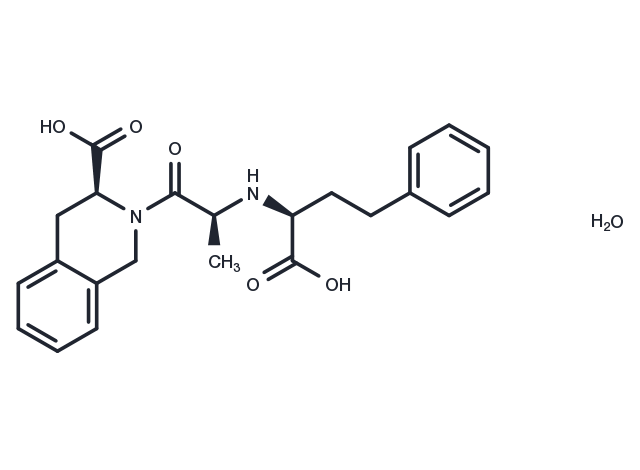Powder: -20°C for 3 years | In solvent: -80°C for 1 year


Quinaprilat is the active metabolite of quinapril, an angiotensin-converting enzyme inhibitor used in the treatment of congestive heart failure and hypertension.

| Pack Size | Availability | Price/USD | Quantity |
|---|---|---|---|
| 10 mg | Inquiry | $ 293.00 | |
| 25 mg | Inquiry | $ 540.00 |
| Description | Quinaprilat is the active metabolite of quinapril, an angiotensin-converting enzyme inhibitor used in the treatment of congestive heart failure and hypertension. |
| Synonyms | Quinaprilat, CI-928, CI 928, BRN 5653070 |
| Molecular Weight | 428.48 |
| Formula | C23H28N2O6 |
| CAS No. | 1435786-09-6 |
Powder: -20°C for 3 years | In solvent: -80°C for 1 year
You can also refer to dose conversion for different animals. More
bottom
Please see Inhibitor Handling Instructions for more frequently ask questions. Topics include: how to prepare stock solutions, how to store products, and cautions on cell-based assays & animal experiments, etc.
Quinaprilat hydrate 1435786-09-6 Quinaprilat CI-928 BRN-5653070 CI928 CI 928 BRN5653070 Quinaprilat Hydrate BRN 5653070 inhibitor inhibit
